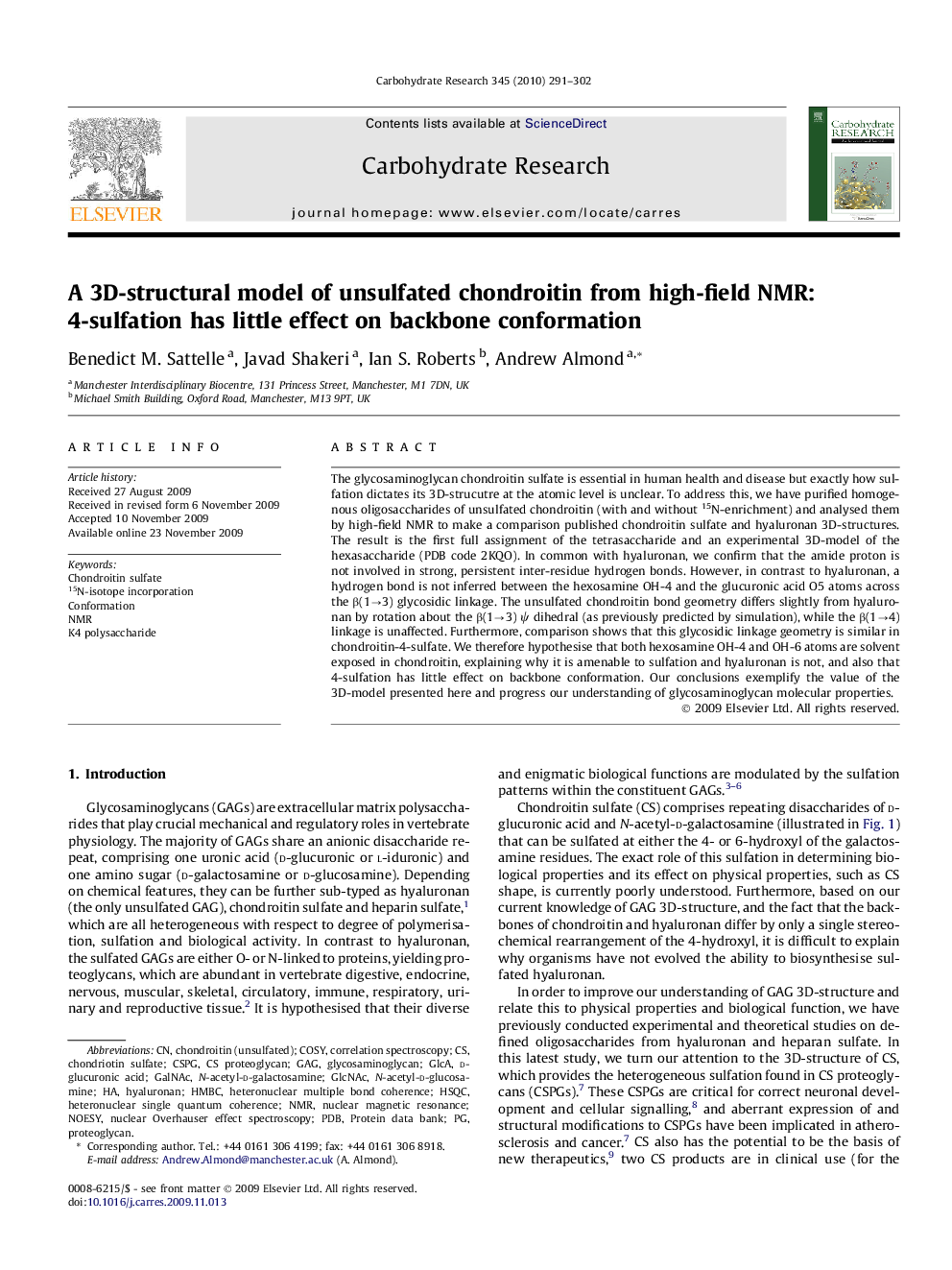| Article ID | Journal | Published Year | Pages | File Type |
|---|---|---|---|---|
| 10605786 | Carbohydrate Research | 2010 | 12 Pages |
Abstract
The glycosaminoglycan chondroitin sulfate is essential in human health and disease but exactly how sulfation dictates its 3D-strucutre at the atomic level is unclear. To address this, we have purified homogenous oligosaccharides of unsulfated chondroitin (with and without 15N-enrichment) and analysed them by high-field NMR to make a comparison published chondroitin sulfate and hyaluronan 3D-structures. The result is the first full assignment of the tetrasaccharide and an experimental 3D-model of the hexasaccharide (PDB code 2KQO). In common with hyaluronan, we confirm that the amide proton is not involved in strong, persistent inter-residue hydrogen bonds. However, in contrast to hyaluronan, a hydrogen bond is not inferred between the hexosamine OH-4 and the glucuronic acid O5 atoms across the β(1â3) glycosidic linkage. The unsulfated chondroitin bond geometry differs slightly from hyaluronan by rotation about the β(1â3) Ï dihedral (as previously predicted by simulation), while the β(1â4) linkage is unaffected. Furthermore, comparison shows that this glycosidic linkage geometry is similar in chondroitin-4-sulfate. We therefore hypothesise that both hexosamine OH-4 and OH-6 atoms are solvent exposed in chondroitin, explaining why it is amenable to sulfation and hyaluronan is not, and also that 4-sulfation has little effect on backbone conformation. Our conclusions exemplify the value of the 3D-model presented here and progress our understanding of glycosaminoglycan molecular properties.
Keywords
GAGHMBCGlcANOESYGalNAcCSPGHSQCN-acetyl-d-glucosamineGlcNAcPDBnuclear magnetic resonanceN-Acetyl-D-GalactosamineNuclear Overhauser Effect SpectroscopYd-Glucuronic acidheteronuclear multiple bond coherenceNMRConformationcorrelation spectroscopyHyaluronanProteoglycanProtein Data BankCOSYChondroitin sulfateGlycosaminoglycanheteronuclear single quantum coherence
Related Topics
Physical Sciences and Engineering
Chemistry
Organic Chemistry
Authors
Benedict M. Sattelle, Javad Shakeri, Ian S. Roberts, Andrew Almond,
